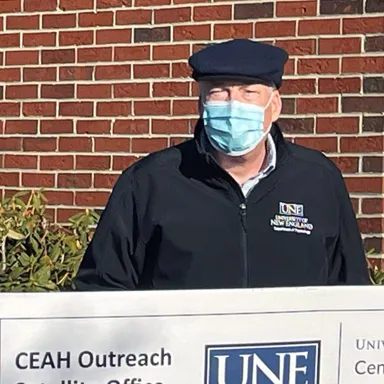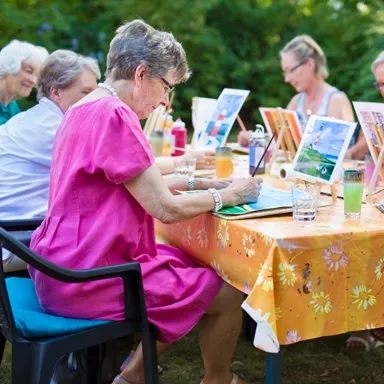Maine’s older population is a microcosm for the challenges facing aging adults and their families across the U.S. today. Our population's median age is the oldest in the nation, almost 45 years. By contrast, Texas' median age is just 35 years, and Utah's 31. This means that proportionately fewer younger, working Mainers support their older neighbors who have retired.
While one of the smaller states geographically, Maine's population distribution favors rural living. Nearly two thirds (61%) of Mainers reside in rural areas. By contrast, just 5% of Californians are rural dwellers. Rural Maine is beautiful and rich in community spirit. The flip side, of course, is that essential services for health, recreation, and life-long learning may be 10's or 100's of miles away. Aging in place in rural Maine presents real challenges. The CEAH seeks solutions to these and other challenges.
CEAH priorities for research are defined by seven pillars. Faculty and student investigators are invited to frame their questions and ideas within and between two or more pillars. This exercise promotes cross-disciplinary thinking and collaboration.

Extend Healthspan
Most are familiar with the concept of lifespan. It has been suggested that humans can live up to approximately 120 years. Most living past age 75 can expect a period of months or years of frailty and decline. "Healthspan" is the period of life before such decline occurs. Extending healthspan has many benefits for individuals and society.

Engage Solutions
The CEAH maintains a satellite office in the Larrabee Woods building at Westbrook Housing. Residents engage with UNE students and faculty in shared learning, community building, and participatory research. Many Westbrook Housing residents are also UNE Legacy Scholars.

Value Elder Voices
The CEAH priorities narrative-informed research. Our faculty and students care about what older adults think, feel, and believe. We pursue this work through the UNE Living Tapestries Project.
